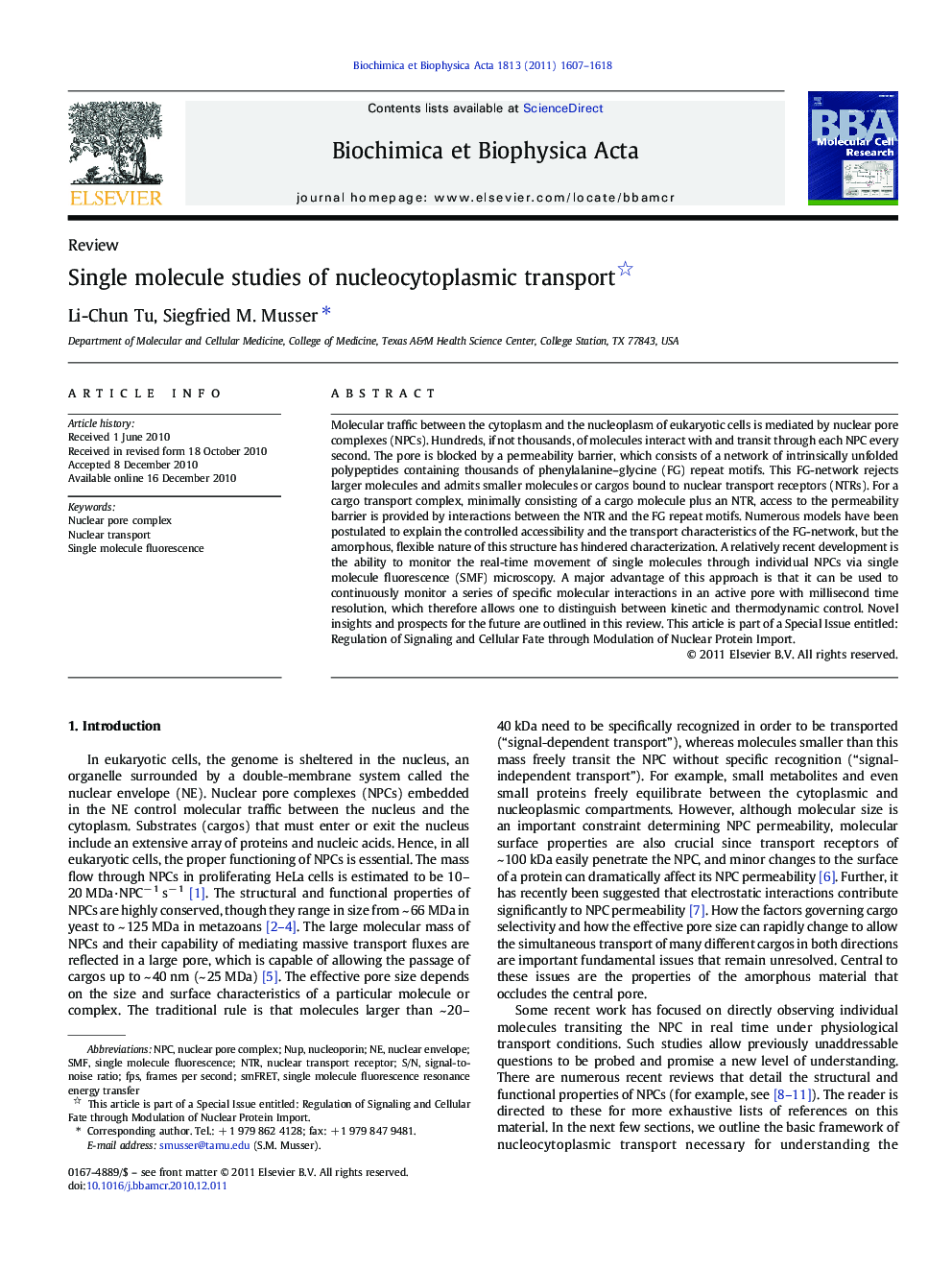| Article ID | Journal | Published Year | Pages | File Type |
|---|---|---|---|---|
| 1950813 | Biochimica et Biophysica Acta (BBA) - Molecular Cell Research | 2011 | 12 Pages |
Molecular traffic between the cytoplasm and the nucleoplasm of eukaryotic cells is mediated by nuclear pore complexes (NPCs). Hundreds, if not thousands, of molecules interact with and transit through each NPC every second. The pore is blocked by a permeability barrier, which consists of a network of intrinsically unfolded polypeptides containing thousands of phenylalanine–glycine (FG) repeat motifs. This FG-network rejects larger molecules and admits smaller molecules or cargos bound to nuclear transport receptors (NTRs). For a cargo transport complex, minimally consisting of a cargo molecule plus an NTR, access to the permeability barrier is provided by interactions between the NTR and the FG repeat motifs. Numerous models have been postulated to explain the controlled accessibility and the transport characteristics of the FG-network, but the amorphous, flexible nature of this structure has hindered characterization. A relatively recent development is the ability to monitor the real-time movement of single molecules through individual NPCs via single molecule fluorescence (SMF) microscopy. A major advantage of this approach is that it can be used to continuously monitor a series of specific molecular interactions in an active pore with millisecond time resolution, which therefore allows one to distinguish between kinetic and thermodynamic control. Novel insights and prospects for the future are outlined in this review. This article is part of a Special Issue entitled: Regulation of Signaling and Cellular Fate through Modulation of Nuclear Protein Import.
Research highlights► Diffusion through nuclear pores can be imaged with millisecond time resolution. ► Single molecule behavior is explained by diffusion models. ► Single molecule fluorescence is a powerful tool for understanding nuclear transport.
